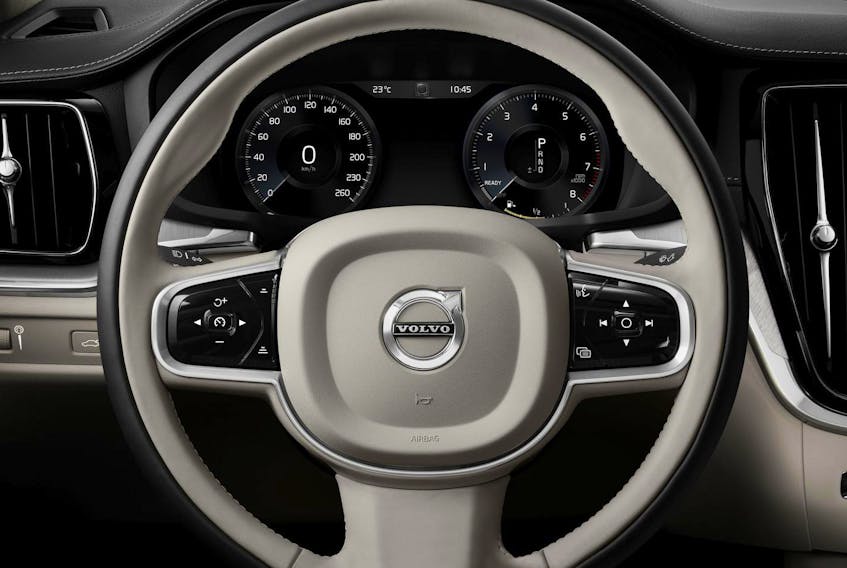How did Volvo earn a global reputation for developing safe vehicles?
A reputation so strong, that Ford Motor Company spent huge sums to buy Volvo and benefit from that expertise.
Later, facing bankruptcy and badly in need of cash, Ford found a saviour in Zhejiang Geely.
The Chinese car company wrote Ford a cheque for $1.8 billion.
From the outset, Geely recognized the wisdom of combining Chinese manufacturing prowess with Swedish design.
It also let the engineers and designers at Volvo do what they did best — engineer and design. The result has been astounding success for Volvo — and Geely.
Volvo’s safety has always been, and remains an industry standard. I recall a trip to Gothenburg and a deep dive into Volvo’s safety engineering process.
Peter Horbury, then Volvo’s lead designer, pointed out it was tough for designers, because appearance takes a back seat to safety.
“Turn the key in a BMW, or slam the door in a Mercedes and you know immediately where your money went. A Volvo driver has to have the worst experience of his life — a severe crash — to appreciate our efforts,” Horbury said.
He pointed out that Volvo was in a unique situation. It operated in a country where traffic safety is a fixation and the government encouraged car companies in this respect.
Investigators and scientists employed by car companies are able to conduct extensive investigation into crashes — on site. They are protected from being forced to testify to their findings in court, ensuring that if they find a problem, they can report and correct it.
“Any vehicle manufacturer who wants to be taken seriously must consider safety research and development in real world conditions — not just mandated test standards,” Horbury said.
This attitude allowed Volvo (and Saab) to take a leadership position. Rather than merely design to specific standards or tests, they were continually out in front — helping set new standards, or ensuring protection for occupants in areas legislators had not even considered.
The human body hasn’t changed all that much over the years, but the traffic environment certainly has. With the unique ability to conduct thorough on-scene investigations, Swedish researchers were able to determine how effectively vehicles, and their systems perform. These investigators also had complete access to the medical records of the occupants. This knowledge was taken back to the lab, and applied directly to everything from crash test procedures to the dummies used in testing. It was used in programming virtual tests, and designing vehicle components.
For example, whiplash was not included in any government tests at the time. Yet it is one of the most common, and costly results of a crash. There were no standards to address this issue, no requirements for manufacturers to provide protection beyond a head restraint. Volvo and Saab researchers found it to be a major issue in crashes. They discovered head restraints weren’t the cure. Both companies designed seats and related systems to address the issue.
They were put into production, and subsequent analysis of crashes involving these seats showed a significant real-world reduction in this type of injury. This information was used to establish new standards used globally.
Seat belts, now an integral part of the safety system of every passenger vehicle on the market, came about under similar circumstances. Volvo introduced the three-point belt in 1959, as the result of knowledge and concern, not legislation.
Volvo’s research showed the most common cause of death to be damage from bi-lateral fractures of the femur, head injuries, pelvic injuries, internal bleeding from chest, abdomen and pelvic injuries. It found deaths from motor vehicle crashes could be divided into three categories, with possible solutions in brackets: 1. dead at the scene (safer cars, better drivers); 2. die within one to three hours of crash (reduce response time — gain “golden hour”; and 3. die from infection, internal bleeding complications and/or multi-organ failure (earlier and more accurate diagnoses of injuries). The third group would automatically shrink with improvements to #2.
Subsequently, the telematics systems in some vehicles, activated by a crash, are able to report to a call centre not only an airbag deployment, but also the time and location. At the time, Volvo suggested this information could also include the size and position of the occupants, before and after the event, and whether or not they were using the seatbelts. Privacy concerns and possible litigation, principally in America have prevented this.
Volvo also suggested heart rate sensors could detect and report that information. It said emergency response personnel and accident investigators would benefit from knowing the crash type — frontal or side impact; hit from rear or rollover; severity of velocity change; how hard was the crash?; and the final vehicle orientation.
Volvo said that not only would the rescue crews be better informed, but expensive duplication of effort could be avoided — two or more units responding to a single-vehicle, single-occupant crash. Officials could be informed as to whether traffic had to be diverted to avoid further crashes and problems.
In Sweden such co-operation and effort is possible. In other jurisdictions, not so much.









